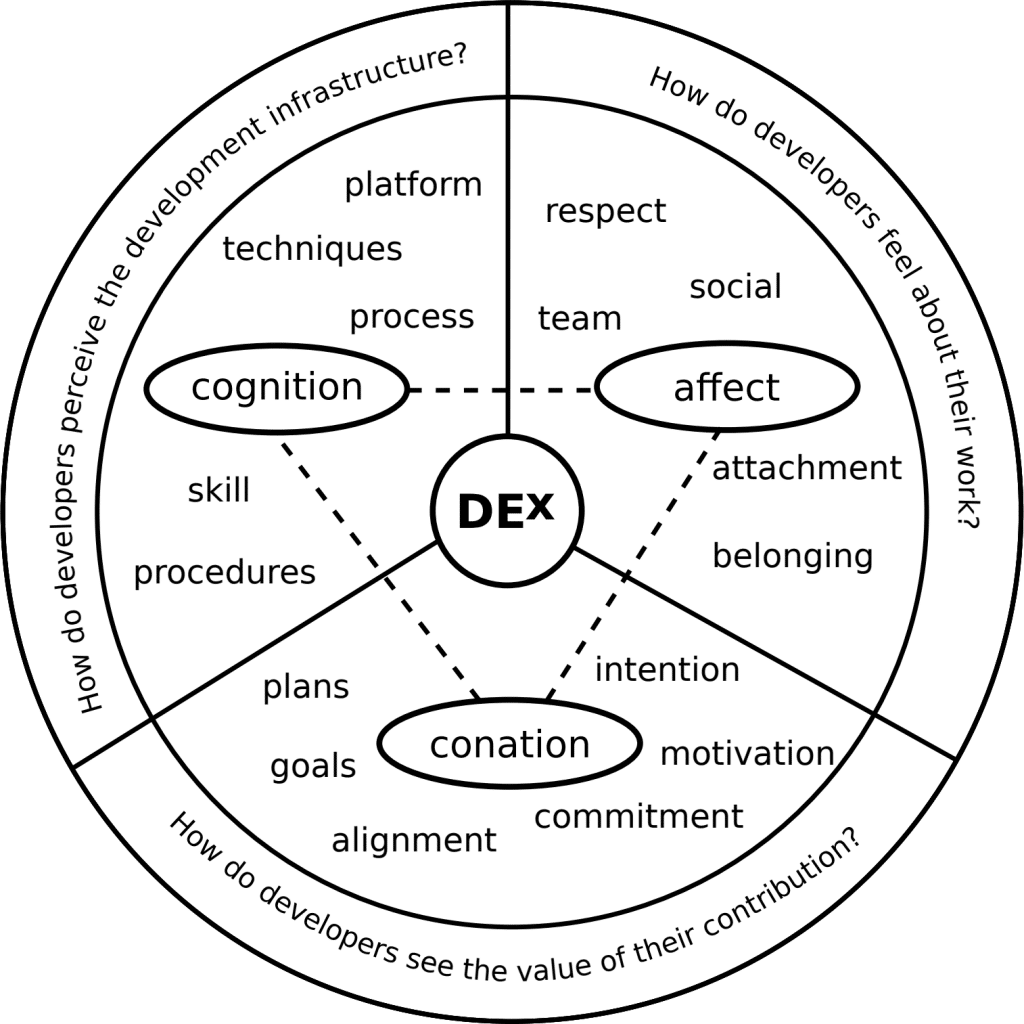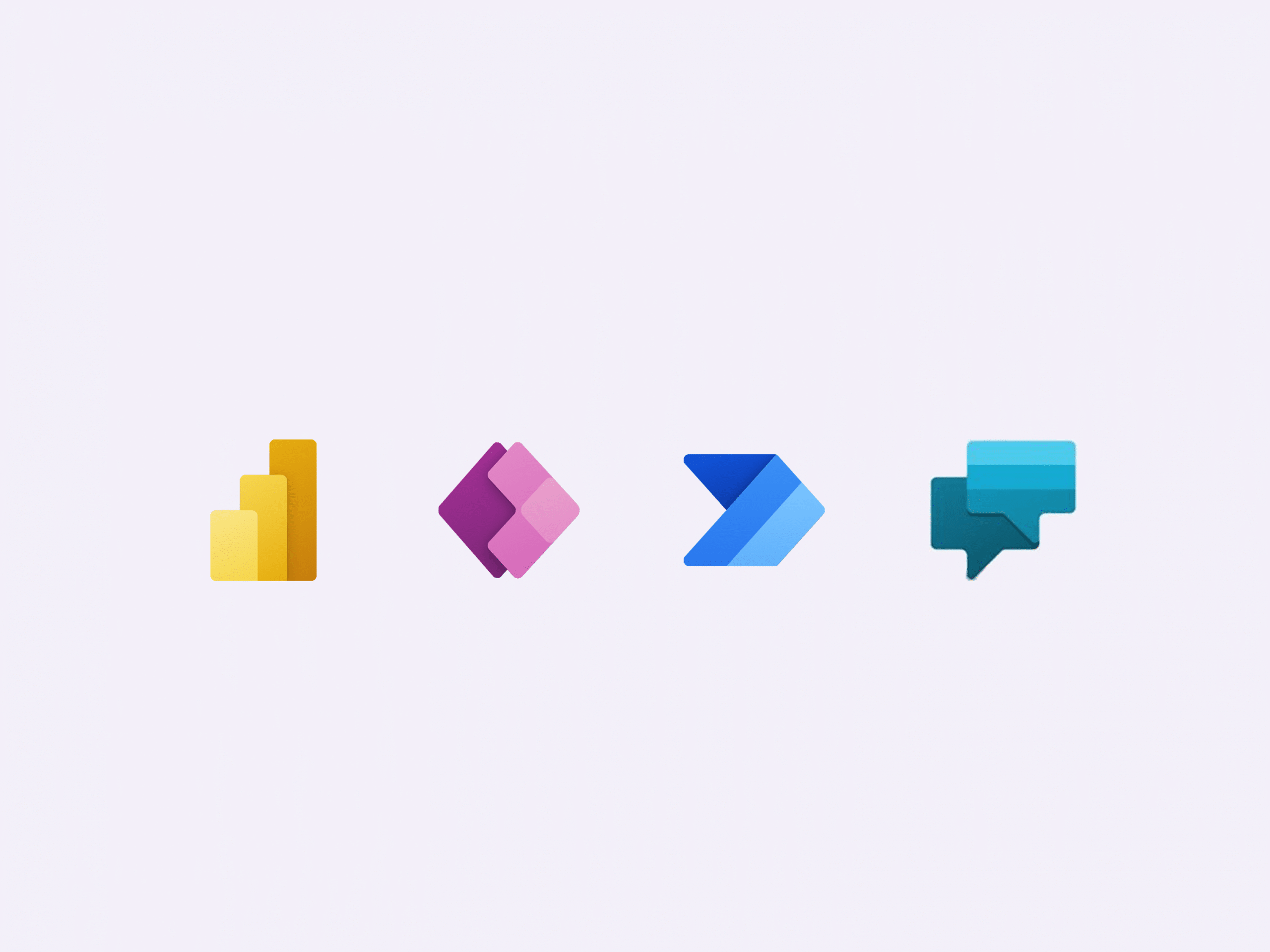Due to the cloud approach of Low-Code Development Platforms (LCDPs), there is basically a basis for collaboration which, compared to classic IDEs, is given by the execution in the cloud. is given. At the same time, some of the functions of LCDPs are not yet fully mature, as the limitation of Canvas Apps shows.
The main goal of User Experience (UX) is to provide users with the application, product or service as intuitively as possible and to promote active use. Developers are also users of applications, but they interact in a more differentiated way with regard to development tasks. In the process, they deal with technical artifacts that are that are not visible to regular users. Therefore, Developer Experience (DX) is composed differently than UX:
While UX considers the context of use of a system, DX considers the context of software development, including aspects beyond software tools, such as development processes, modeling methods, and other means of structuring software engineering tasks.
Kuusinen, et al.
In addition to characteristics that are the same between UX and DX, DX’s subject area expands due to its broader scope, which is critical for developers to understand: UX focuses primarily on the benefits of the application (user-centered design), while DX focuses on the creation of the application (product- and process-centered design).
Developer Experience as a prerequisite for successful projects
DX is a significant factor in making IT projects successful. An immature DX can have a negative impact on project performance. Studies show that the productivity, motivation and performance of IT specialists decline in this case. A possible consequence is „shortcuts“ in development processes and the disregard of long-term goals, error tolerances and safety criteria. A model for measuring DX highlights three relevant criteria:
Affect
This category deals with the wellbeing of developers, their developers, their feelings about belonging, respect, social relationships (within a project), and the work itself.
Uniform views and the integration of all stakeholders (e.g., on the part of developers and end users) in a development process strengthen the sense of community. Developers are thus an integral part of the technical conception of applications. This has a positive influence on the mutual respect of different stakeholders.
Conation
The second category explores how developers experience the experience appreciation for their work. This includes factors such as motivation, Goals, alignment, and commitment.
This innovative form of collaboration with LCDPs has the potential to increase developers‘ sense of value: They enter into direct contact with the end users (e.g., business department) and receive correspondingly direct feedback – a procedure that does not apply within the framework of classic development paradigms. Possibilities of prototyping and immediate imagining and testing contribute to higher productivity.
Cognition
The third category covers developers‘ perceptions of regarding the infrastructure and development paradigms provided to them. Development Paradigms. It includes issues such as platform, technology, process, and competence.
The LCDP used has a direct influence on the DX, since LCDPs differ in their technologies. Due to low standardization, there is no established comparability. This is accompanied by platform-specific infrastructures and development paradigms. The evaluation of the DX in terms of perception must therefore be considered in the context of these and company-specific process models.
The original model for measuring DX comes from this publication:

Measures to increase the Developer Experience
In their publication, Kuusinen and Beecham name three relevant aspects which measures can be taken to increase DX:
| Motivation Factor | Requirement |
|---|---|
| Efficiency | Efficient and easy-to-use IDE |
| Flexibility | Needs of developers must be met, e.g. allowed customizations, scalability and extensibility according to development and Application Development and Delivery (AD&D) processes |
| Information content | Support with relevant information, e.g. context-based help when writing source code |
| Intuitive Integrated Development Environment (IDE) | The IDE must be intuitively designed and offer intelligent functions with solution-oriented processes |
The question of whether motivation-enhancing measures are compatible with LCDPs cannot be answered in a general way: Each LCDP pursues its own technological approaches, which are provided as PaaS. There are configuration options and extensions within the LCDP. However, they are limited by the high level of standardization within a platform. If a company uses an LCDP, it is therefore dependent on the existing LCDP configuration options and their further developments. Research has also shown that the developer documentation for LCDP is incomplete in some places.
For deeper insights on increasing motivation, check out a publication by Henriques, et al. called „Improving the Developer Experience with a Low-Code Process Modelling Language.“
Questions & Answers
How can I improve the Developer Experience (DX) on the Microsoft Power Platform?
Work on important factors such as efficiency, flexibility, information content and an intuitive IDE. These are essential motivation factors for developers.
How can I finish projects successfully on the Microsoft Power Platform?
The most important element is the internalization of the philosophy: Low-Code Development Platforms require an agile project approach considering democratization and platform-specific models. An essential component concerns the Developer Experience (DX), as this is no longer attributed only to “real” developers, but is also valid for Citizen Developers.
How can Citizen Developers help in the development process?
Citizen Developers play a central role in the development of applications on Low-Code Development Platforms (LCDP). Unified views between development and application (through the low-code paradigm) enable this.


Schreibe einen Kommentar